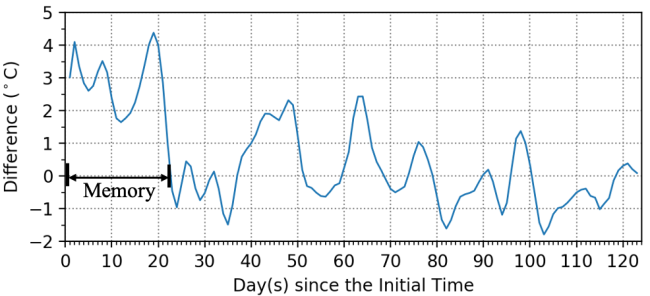The initiative called "Impact of initialized land temperature and snowpack on sub-seasonal to seasonal prediction" (LS4P) was launched in 2018. More than forty research groups worldwide participated in the LS4P project.
"We want to pursue a new gateway in improving the sub-seasonal to seasonal prediction by the land surface and subsurface temperature approach, called LST/SUBT approach," said Dr. QIU Yuan from the Institute of Atmospheric Physics (IAP) of the Chinese Academy of Sciences.
The first phase experiment of LS4P is to simulate the effect of spring LST/SUBT anomalies over Tibetan Plateau on late spring and summer precipitation in East Asia with multiple earth system models.
Each model group conducted a control and sensitive experiment. The only difference is that the LST/SUBT initial anomalies calculated based on the observed 2-meter air temperature (T2m) anomalies and model bias were imposed over Tibetan Plateau in the sensitive experiment.
However, Dr. QIU found his model and other LS4P models were generally unable to preserve the imposed LST/SUBT anomalies well and thus had difficulty in generating the observed T2m anomalies over Tibetan Plateau. "We suspect that this is mainly due to land parameterizations of the models," said Dr. QIU.
They assessed the memory of LST/SUBT initial anomalies over Tibetan Plateau in three widely used land models (SSiB, CLM4, and Noah-MP) by imposing ±5 ℃ initial anomalies in the sensitive experiment.
The memories of the LST/SUBT initial anomalies (referred as surface/soil memories) are defined as the time interval between the time when the time series of difference in daily LST/SUBT between the ±5℃ and control experiment break through the zero value line and the initial time, with the unit of days. The memory of T2m anomaly (referred as T2m memory) is defined in the same way, as an index to assess the response of surface air temperature to the LST/SUBT initial anomalies.
"The results show that the simulated soil memory generally increases with soil depth and changes rapidly with depth above about 0.6-0.7 m," said Dr. QIU. "The land models have fairly long soil memory, with the regional mean 1.0-m soil memory generally longer than 60 days. However, they have short T2m memory, with the regional means generally below 20 days."
Dr. QIU found that CLM4 and Noah-MP had longer soil memory at the deeper layers (> ~0.05m), while SSiB had longer T2m/surface memories and near-surface (≤ ~0.05m) soil memory, which makes it hard to say which land model is optimal for the application of LST/SUBT approach.
Unexpectedly, the T2m/surface/soil memories are various over Tibetan Plateau, different between the +5℃ and -5℃ experiment, and distinct among the land models, which can be partially explained by both changes in the surface heat fluxes and variances in the hydrological processes over the plateau.
"This study can help us understand the LST/SUBT approach and provide critical thoughts and methods to further LS4P experiments and the development of land models." Said Dr. QIU.

Time series of the differences in daily soil temperature at the layer of 0.25 m between the control and +5℃ experiment with the land model of Noah-MP on a randomly selected model grid (35.3°N, 88.4°E). (Image by IAP)





